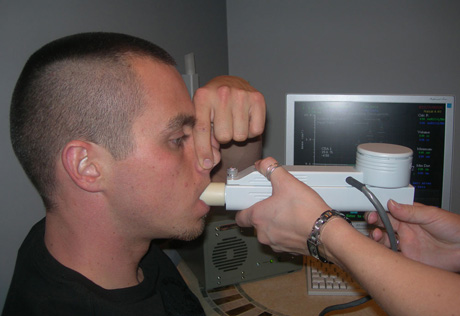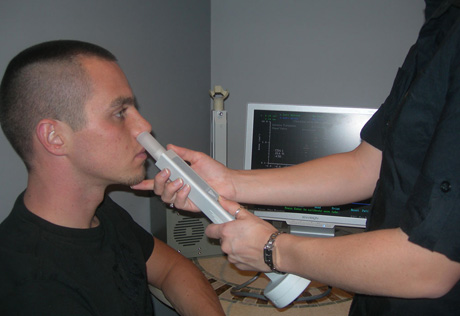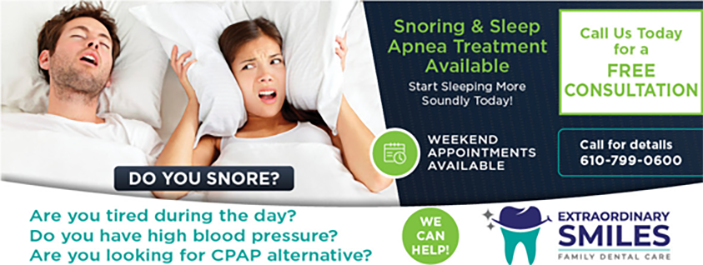Start sleeping more soundly today!
What is Obstructive Sleep Apnea (OSA)
Sleep apnea is essentially your body choking on itself and causing repeated episodes of partial or complete suffocation sometimes lasting a minute or more.
These choking and suffocating episodes repeat constantly throughout the night causing a myriad of health complications including increased risk of stroke,heart attack and even death. The cause of this collapse in the airway is usually due to the soft tissues in the mouth, tongue or throat closing down and blocking airflow during sleep. The first sign of this is usually snoring which happens when you are attempting to breathe through a narrow airway. If left untreated snoring often escalates to full OSA where the narrow airway is now completely blocked.
Nearly 1 in 4 adults over 30 are unknowingly suffering from at least mild sleep apnea.
 Do you snore loudly (louder than a person talking or loud enough to be heard through closed doors)?
Do you snore loudly (louder than a person talking or loud enough to be heard through closed doors)?
 Do you often feel tired, fatigued or sleepy during the day?
Do you often feel tired, fatigued or sleepy during the day?
 Has your spouse or bed partner ever observed you stop or pause breathing in your sleep?
Has your spouse or bed partner ever observed you stop or pause breathing in your sleep?
 Do you have or are you being treated for high blood pressure?
Do you have or are you being treated for high blood pressure?
 Are you overweight or obese?
Are you overweight or obese?
 Are you over 50 years old?
Are you over 50 years old?
 Is your neck circumference greater than 16 inches?
Is your neck circumference greater than 16 inches?
 Are you male?
Are you male?
If you answered yest to two or more of the above questions then you should have your sleep health evaluated. Please take a moment and fill out our sleep health evaluation online. Test results are available to you immediately.
Symptoms
Common sleep apnea symptoms include:
- Waking up with a very sore or dry throat.
- Loud snoring.
- Occasionally waking up with a choking or gasping sensation.
- Sleepiness or lack of energy during the day.
- Sleepiness while driving.
- Morning headaches.
- Restless sleep.
- Forgetfulness, mood changes, and a decreased interest in sex.
Causes of Sleep Apnea
In adults, the most common cause of obstructive sleep apnea is excess weight and obesity, which is associated with soft tissue of the mouth and throat. During sleep, when throat and tongue muscles are more relaxed, this soft tissue can cause the airway to become blocked.
Treatment Options
Recent global research and clinical trials have demonstrated that dentistry can be successful in treating mild to moderate sleep apnea, snoring and TMJ disorders. Our practice incorporates specialized dental services that use oral appliances to help ease the symptoms of sleep apnea, snoring, and jaw disorders.

Acoustic Pharyngometer
The Eccovision® Acoustic Pharyngometer allows users to quickly and easily measure a patients pharyngeal airway size and stability from the Oral Pharyngeal Junction to the Glottis. The Pharyngometer graphically displays the relationship between the cross-sectional area of the airway and distance down the airway in centimeters. Studies have shown a clear relationship between the existence of OSA and a narrow, collapsible, airway. The Pharyngometer accomplishes these measurements using acoustic reflection technology, similar to a ships sonar. Sound waves are projected down the airway and reflected back out in such a way that the Pharyngometer software can analyze and quantify changes in the airways cross-sectional area. The test is minimally invasive and takes 2-5 minutes to complete.

Acoustic Rhinometer
The Eccovision® Acoustic Rhinometer allows for quick and easy measurements of nasal patency. The device gathers information using acoustic reflection.
Sound waves are sent up the nasal passageway and they are reflected back out in such a way that the Eccovision® Acoustic Rhinometer can accurately map out the topography of the nasal airway. This allows us to clearly identify the location and severity of any obstruction in the airway. The test is completely non-invasive and takes 30 seconds to complete.

for a free consultaion for
Snoring and Sleep Apnea
